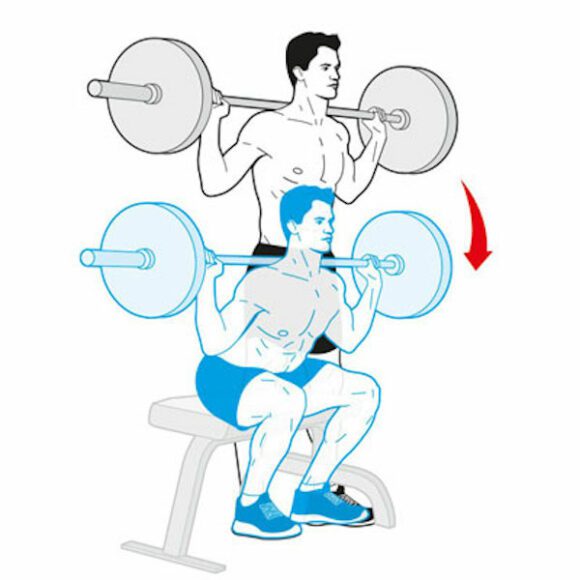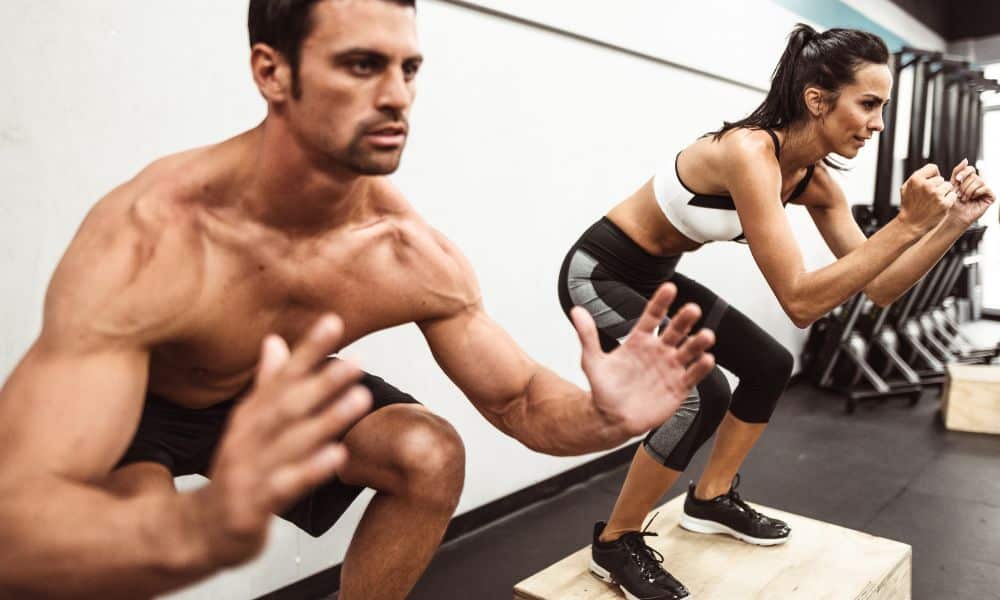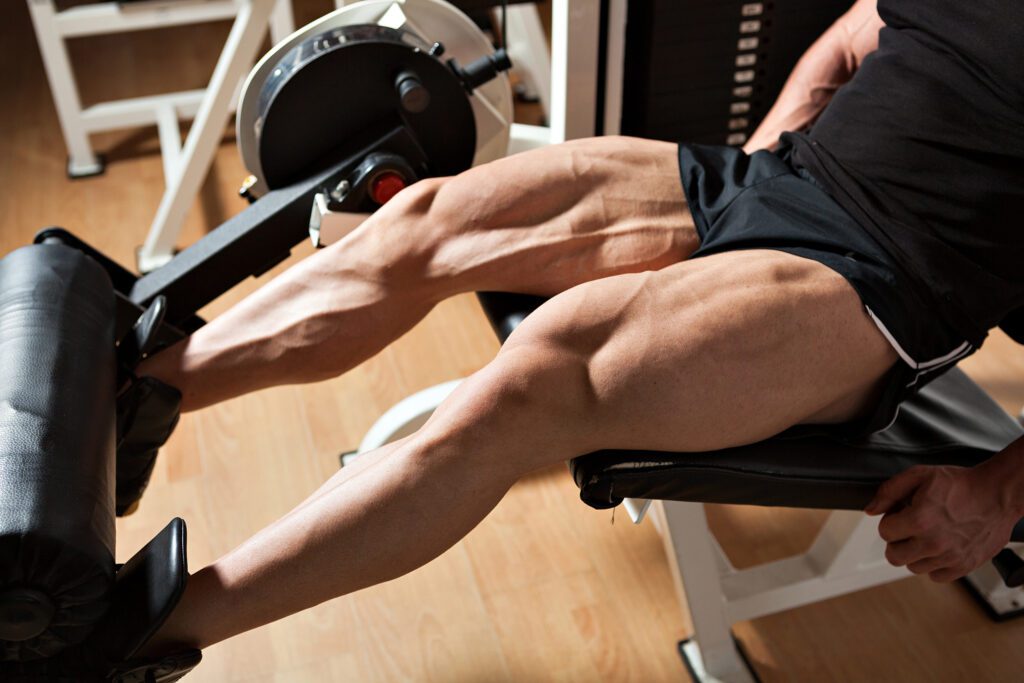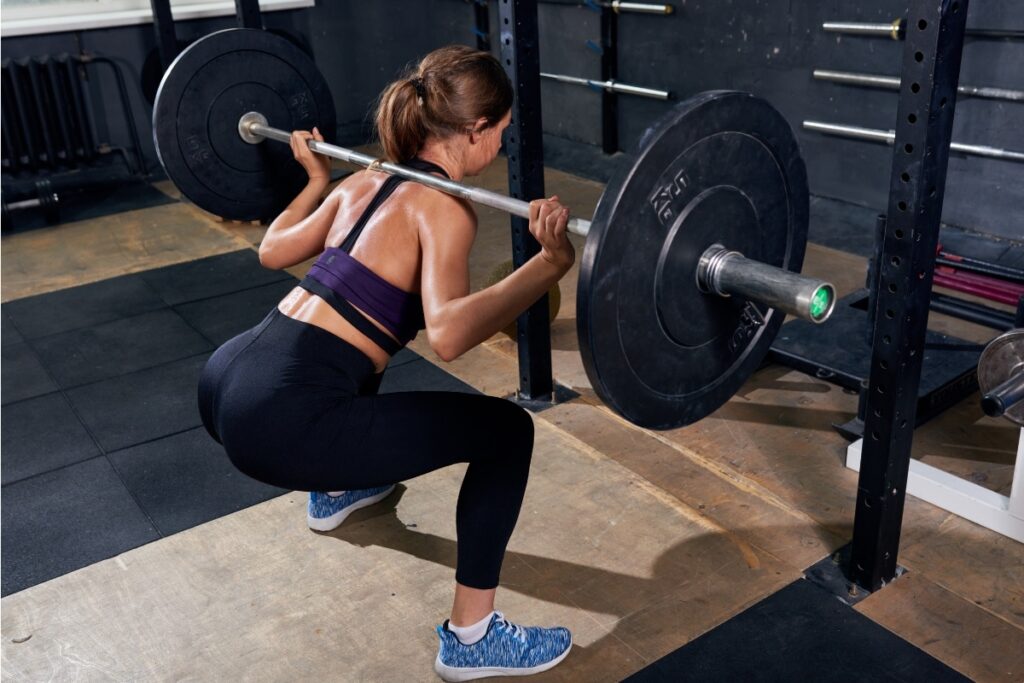Box squats should be incorporated into every lifter’s routine because they develop the lower body more than regular squats. But the benefits aren’t just physical. People who do box squats correctly can experience a positive emotional boost due to endorphin release. If you’re ready to start, read through this page which will help you learn how to do box squats correctly and safely.
What Are Box Squats?
Box squats are a squat variation that allows you to practice the bottom of the squat, which is where most people struggle during their squats. They can be done on a box or bench, with or without weight.
Box squats are a great way to improve your squat technique and build strength in your legs and core!
How to Do a Box Squat
To do box squats, you’ll need to find a tall box to make the exercise challenging but not so high that it prevents you from maintaining perfect form. The best way to determine this is by finding a box height where your hips drop below knee level at the bottom of each rep. If your hips aren’t below knee level, raise or lower the box until they are; if they’re too low, raise them until they come back up above knee level so you can maintain control through both phases of the squat: descent and ascent.
If having an adjustable-height bench or plyo box isn’t an option for you, start by using a higher surface like a chair or stool; as long as there’s room on top of it for your feet (the platform should be comprehensive enough), then use whatever works best in terms of height and stability!
3 Box Squat Variations
Box squats are a great way to build strength and mass. While they’re not the only squatting variation you should use, they’re a staple in many powerlifting programs. Here are three different box squat variations that you can add to your routine:
- 1/2 Box Squat
- Full Box Squat
- Parallel Box Squat

How to Work out Safely and Avoid Injury
Box squats will help you build strength and muscle mass with proper form. But they can also lead to injury if you don’t know how to do them correctly. By following these tips for a safe set of box squats, you’ll be able to maximize your workout while minimizing the risk of injury.
Use a box that’s the correct height.
If the box is too high or too low, it could cause knee pain or back strain when doing your squats. The best place to start is with a height between parallel and full depth (when your hips are lower than your knees). For most people, this means setting the barbell on one side of the box so that when they stand up out of their squat position, they’ll feel their hamstrings stretch slightly before standing completely upright again—this indicates that they were using an appropriate amount of weight during their exercise session!
Keep appropriately aligned.
You might have heard “knees out” before as part of an exercise tip or cue—but what does it mean? When performing any movement involving weight training (or even just walking!), keeping your knees out helps protect against knee injuries by ensuring proper alignment along each joint throughout all phases of motion. This means keeping them pointed forward instead of inward towards another person standing next door!
Keep stable
In addition to alignment issues like those mentioned above pertaining specifically to joints in general terms, there are specific patterns involving stability that should always be kept track of overtime because accomplishing these things correctly will ensure not just proper posture but also long-term health benefits such as prevention against osteoporosis later on down life’s road.
Benefits of Box Squats
The box squat has many benefits, including:
Increase your squat depth
Box squats allow you to sit back into your hip crease and take advantage of the stretch reflex in the glutes and hamstrings, which helps you accelerate out of the hole. In addition to allowing a deeper range of motion, they also improve stability when coming out of the bottom position because they require more control over your body weight than just sitting on a bench.
Improve mobility by strengthening weak areas
For example, if you have tight hips or ankles, regular squats can cause pain or discomfort when lifting heavy loads (it’s crucial to have good mobility). But with box squats, these weak links in our body are less likely to be compromised because there is no stress being put on them during this exercise; instead, we’re only able to move around as much as our strength allows us before having trouble keeping ourselves balanced while holding onto something solid like a rack rail or barbell plate set against an incline bench (which must not exceed 45 degrees). This allows us greater freedom throughout our range of motion without restrictions imposed by injury-prone muscle groups like those found along either side of our spine!
Work Your Entire Lower Body
Box squats are an excellent way to build muscle mass in your lower body and improve your squatting technique. You can use them to increase the weight you lift or just as a form of high-intensity training (HIT).
Box squats are also a great way to increase your squat depth because they require you to sit back further than expected.
Strengthen Hamstrings and Glutes
Box squats are a great way to strengthen your hamstrings and glutes, the main muscles that help you push back up from a squat. Lower yourself into the box, squat perfectly, and focus on using your hamstrings to push back up. Then, as you stand up, think of pressing through your glutes and hips—this will ensure that these muscles are doing all the work instead of relying on other muscle groups such as quads or calves.
Build Awareness of Your Squat Depth
If you’re unsure what perfect squat depth looks like, it’s easy to build that awareness. First, engage the muscles in your core—you know those things in your stomach and back that help support you during everyday tasks? Those are some of the most important forces for squats. Then, tighten up the muscles in your upper body and neck. Hold this position for one second before starting each rep with a clean, flat back.
After doing this for a few reps, take note of how far down you went into the box squatting position before coming back up again. You may find it too low or too high (adjust accordingly). If you’ve never done box squats before or misused them, try using lighter weights until you get used to them—it’ll save headaches later on!
Get Stronger at the Bottom of Your Squat
The box squat is a great way to improve your squat depth. It also helps you get stronger at the bottom of your squat, which is more complicated than it sounds.
This exercise teaches your body to use its glutes and hamstrings more efficiently, allowing you to build better strength in these muscles. In addition, this will enable you to perform other exercises with greater ease and comfort.
The Last Word on the Box Squat a Simple Guide to Performing the Exercise
If you’re ready to add box squats to your workouts and try them out, the best thing you can do is go into them with an open mind. So many different variations of this exercise can help you improve your squat form and strength at the bottom of your squat. Just remember that if this is something new for you, take it slow first, and don’t push yourself too hard or fast!




